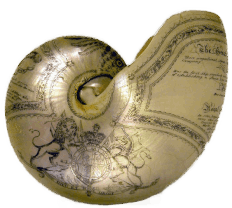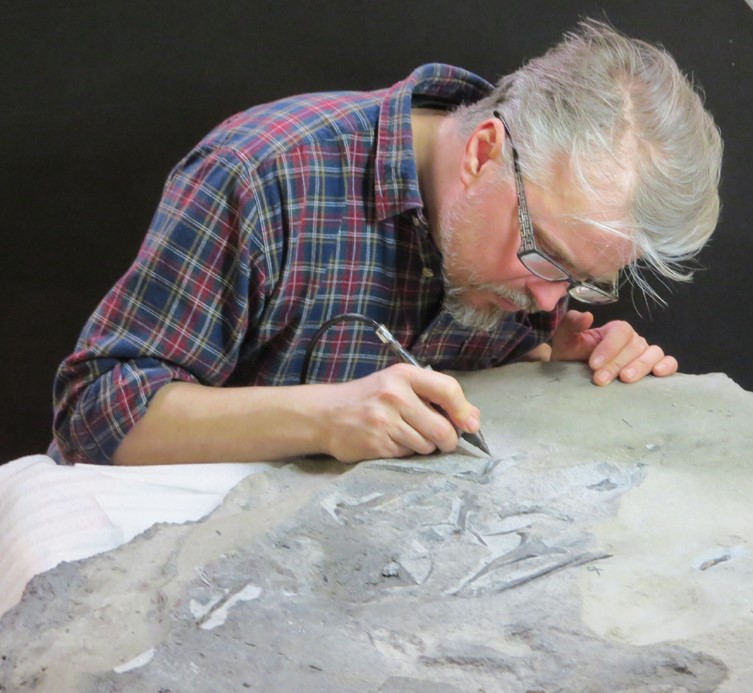
In 2017/2018 Nigel Larkin spent several weeks preparing this gorgeous skeleton for study, using a variety of mechanical preparation techniques to remove the Jurassic sedimentary rock. This was to to expose as much of the skeleton as possible whilst keeping the fragile bones in articulation with one another so that the fossil could be studied and described. Prior to collection in the field, the skeleton had been exposed to weathering and erosion in the intertidal area where it lay in situ, leaving it being presented as a cross-section through the skeleton, including a section through the top of the skull (so the top portion of the skull is missing, having been eroded away). The bones exposed on the surface of the main block and in the main counterslab were covered with adhesive at the time of collection to protect them. Some of this adhesive had emulsified (turned white and opaque) as presumably it was applied when the rock was wet, during collection. Prior to preparation all the pieces were cleaned with compressed air, small brushes and scalpels. Acetone was used to dissolve and remove the emulsified adhesive. The clean surfaces were then photographed.
Acid preparation was considered but was discounted in favour of mechanical preparation which actually worked very well. A variety of pneumatic preparation pens were used to remove the matrix from around the bones under magnification, with work close to the bones being undertaken with a gentle high frequency vibrating ‘Pferd’ nib. The bones seem to have been weathered slightly before or during burial (with some degraded surfaces) and are largely in a crushed state with multiple cracks. As bones were revealed and prepared as fully as possible, they were given a thin coating or Paraloid B72 at about 5 to 10% in acetone (this is easily reversed with acetone if required). The specimen consisted of: the main slab of rock containing most of the skeleton including the skull (weighing about 142 kg before work started, now weighing about 100 kg after preparation, removal of the skull and trimming so that it can fit into a CT scanner); the main counterslab (7 kg) containing many vertebrae and at least one limb bone (?femur); and five other smaller pieces of counterslab (14 kg combined) that contained a portion of wing bone and the tip of the skull.
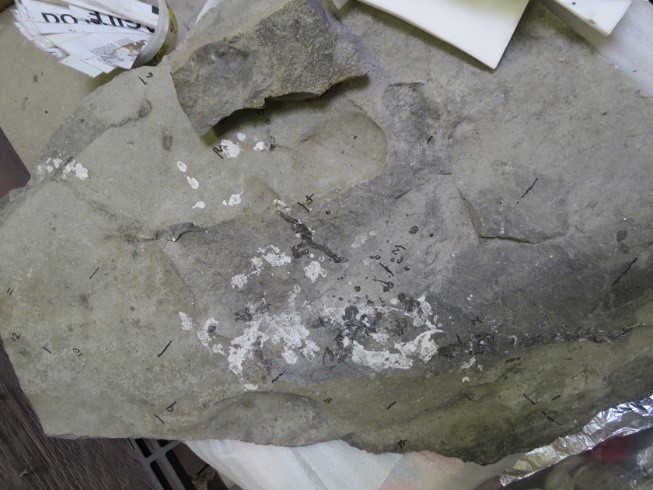
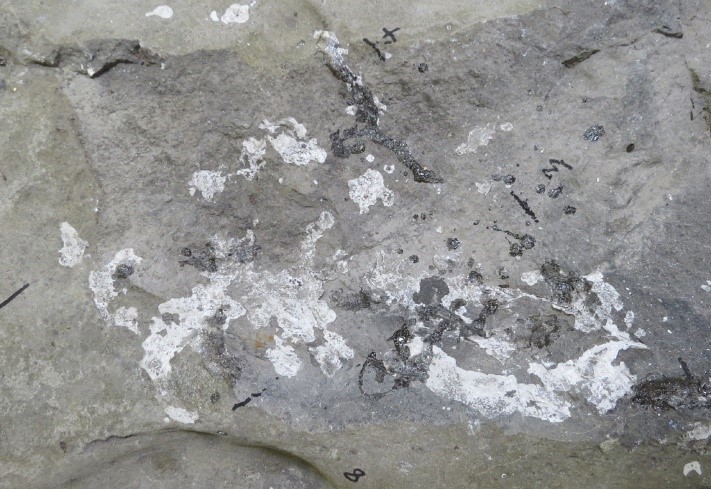
Above left: the main block before cleaning and preparing, with the white adhesive in place. Above right: close-up of the same.


Above left: The same block just after preparation commenced. Above right: the main block after preparation was completed - including cutting the block down to size to enable it to fit into a CT scanner, and removing and preparing the skull.


Above left: Whilst preparing the main block, three complete claws and associated phalanges of a manus were uncovered. Above right: Also, the metatarsals of one pes were also revealed).
Removing the skull, and reducing the main block to enable it to fit in to a CT scanner
The section containing the skull was removed from the main block with a 30mm petrol driven circular saw. The piece containing the skull weighed 10.98 kg before preparation started. After preparation, the skull and the remaining matrix still attached weighed just 0.91 kg. The specimen was prepared from the underside. Much of the rock was removed with a small pneumatic circular saw, hammer and chisel, exploiting the natural horizontal layering of the sediment. Removal of the matrix closer to the skull was undertaken with pneumatic preparation pens under magnification. All the matrix removed has been kept as it could be useful for analysis in the future. The skull had lain the right way round in the sediment (i.e. dorsal surface uppermost), but had been planed-off by intertidal erosion. The mandible appears to be complete, including its articulation with the skull, and the portions of the maxilla, premaxilla and jugal are preserved, as well as some of the orbit and rear of the skull. Matrix has been left attached to the skull and mandible to keep the specimen more robust and less vulnerable to damage. To have mechanically prepared the tip of the skull and mandible would have risked damaging the very fragile teeth. These should be relatively easy to see with Micro CT scanning as there is now not a lot of sediment covering them.
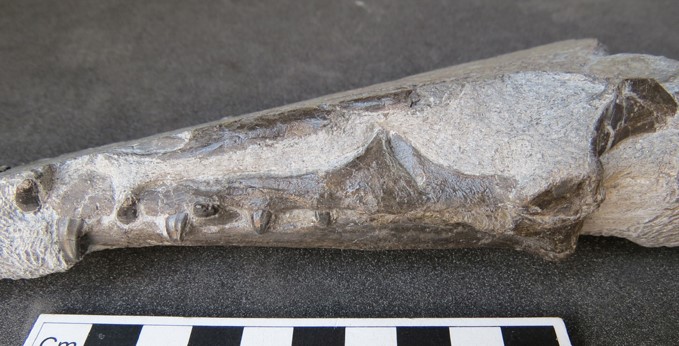
Above: Side aspects of the skull and mandible.
